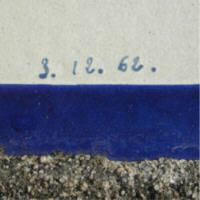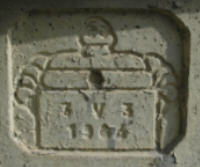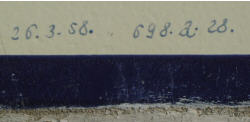







|
Most of the roadsigns made by Michelin are exactly dated. Indeed, a handwritten mention under the shape "day month year " appears on the enamel of the roadsign, generally below, to the right or to the left. |
|
On certain roadsigns (those intended to be put in a precise place) figure also in handwritten characters a code identifying the place of installation. |
|
From 1946, the support in reinforced concrete is also dated in the back. This dating present under the shape of a relief molded plug in the concrete. This plug represents the "bibendum" framing with the arms one cartridge containing the precise date of its manufacture, or only the year. This plug is not still perfectly legible because of the degradation of the concrete. But the comparison of two dates (that of enamel and that of the support) allows to notice that often several months ago of distance between both. |
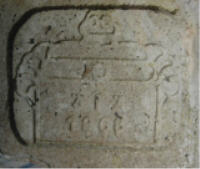
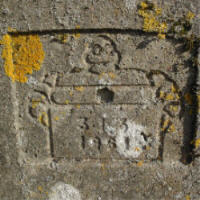
|
The raw material is a lave, gray stone of the careers of Volvic or Le Mont-Dore (63), in blocks of 1,5m3 heavy 4000 kg. Transported to the factory of Cataroux, the “bornes d’angle” are produced in patches 15 mm in thickness, by means of working metal blades in a current of waters and of stoneware. The enamel is a powder made by clay and by oxides mixed colouring agents; it is finely crushed during hours, and it is of the marriage of this stone and of these enamels that are going to be born road signs. Enamelled and literally cooked in the oven, plates are warmed in a temperature of 800 °C; they are then cooled and steered on the workshop of the concrete where they are arranged inside a metal mould. After waste of the concrete, the “borne d’angle” will go out of this mould, of a single coming. The lave adheres perfectly to the concrete and makes literally body with it. |
|
|
|
The “borne d’angle” is made by a single piece, in reinforced concrete. It measures 1,75 m of height and weighs approximately 380 kg. Plates in enamelled lave contain the indication statutory of the categories and numbers of road, one or two arrows of direction and one or two villages. Letters and figures are blue very dark on white bottom. The colour of superior cartridge varies according to the approached type of way. The only preliminary documents, for the installation, are: on hard ground, a excavation of 40 cms on 60 in 80 cms deep; on ground furnish, a excavation of 50 cms, on 60 in 80 cms deep, in which we use 60 dm3 of the thin concrete. |
|
|
